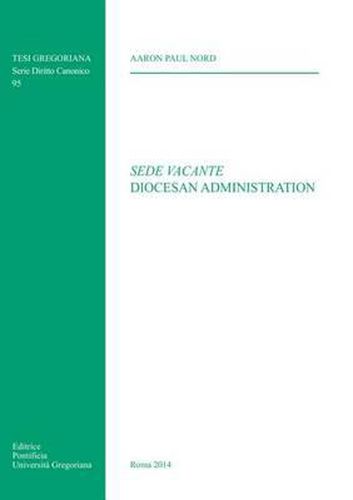Readings Newsletter
Become a Readings Member to make your shopping experience even easier.
Sign in or sign up for free!
You’re not far away from qualifying for FREE standard shipping within Australia
You’ve qualified for FREE standard shipping within Australia
The cart is loading…






What should be done in a vacant diocese, and what should be left for the next bishop? Fortunately, legal questions about the administration of a vacant diocese have clear answers. This dissertation answers questions about the diocesan administrator’s power to ordain deacons, to approve the alienation of parish goods, to grant permissions to religious, and to continue initiatives begun by the former bishop. The work also explains to what extent the diocesan administrator can prosecute delicts, change the diocesan curia, take out loans, and represent the diocese in a trial. The clear answers come from four principles foundational to the law of the vacant see, principles inherent in the canonical tradition and in a vacant diocese’s basic situation. In this light, canon 428 1, sede vacante nihil innovetur, has a clear interpretation and a legal effect distinct from 2 of the same canon. Together, 1 and 2 of canon 428 give firm answers for diocesan administrators, but answers which also respect different questions’ unique features. Also considered are differences between apostolic administrators sede vacante and diocesan administrators. An analysis of over 30 recent decrees from the Roman Curia shows that most apostolic administrators can do what diocesan administrators cannot. Finally, the dissertation gives guidelines for prudent sede vacante administration. Since a sociological study has uncovered patterns in how long dioceses in the United States of America remain vacant, sede vacante law suggests that one should administer vacant archdioceses differently than vacant dioceses.
$9.00 standard shipping within Australia
FREE standard shipping within Australia for orders over $100.00
Express & International shipping calculated at checkout
What should be done in a vacant diocese, and what should be left for the next bishop? Fortunately, legal questions about the administration of a vacant diocese have clear answers. This dissertation answers questions about the diocesan administrator’s power to ordain deacons, to approve the alienation of parish goods, to grant permissions to religious, and to continue initiatives begun by the former bishop. The work also explains to what extent the diocesan administrator can prosecute delicts, change the diocesan curia, take out loans, and represent the diocese in a trial. The clear answers come from four principles foundational to the law of the vacant see, principles inherent in the canonical tradition and in a vacant diocese’s basic situation. In this light, canon 428 1, sede vacante nihil innovetur, has a clear interpretation and a legal effect distinct from 2 of the same canon. Together, 1 and 2 of canon 428 give firm answers for diocesan administrators, but answers which also respect different questions’ unique features. Also considered are differences between apostolic administrators sede vacante and diocesan administrators. An analysis of over 30 recent decrees from the Roman Curia shows that most apostolic administrators can do what diocesan administrators cannot. Finally, the dissertation gives guidelines for prudent sede vacante administration. Since a sociological study has uncovered patterns in how long dioceses in the United States of America remain vacant, sede vacante law suggests that one should administer vacant archdioceses differently than vacant dioceses.